Anyone that can get out to California has to go see these Redwood trees and the Redwood forests. They are absolutely spectacular, peaceful, inspiring...you cannot get enough of them.
We went to the Avenue of the Giants, a 26-mile drive along the Eel River where the entire drive is lined with these magnificent trees. These are earth's oldest living things. Some are over 2200 years old. Most are around the 900-1200 year old range.
Besides walking through the forest looking at the base of the trees and the ferns and other growth, you end up looking up constantly at the amazing height of them.
When there is too much rain, which soaks the soil, and strong winds come up, the older trees will fall. You can see the gigantic cavity left in the ground where the trunk pulled out. Standing next to these stumps makes you see, even more, how large they were. After they fall, the forest begins to take them back over. It can take up to 400 years for one of these fallen giants to completely decompose!
Wonderful scenery along the paths as well, including Fairy Rings (or Cathedral Rings). This is where younger sprouts are growing up next to an older tree so that, one day, they'll become the giant after the older one falls.
There is so much more to the Coastal Redwoods that we had to include some information that we find fascinating. We saw a movie at the Visitor's Center that showed Stephen Sillett climbing and documenting the Redwoods. It was terrific. Here's a site. Be sure to click on the Photos link below. It will show you how they climbed the trees.
http://www2.humboldt.edu/redwoods/photos/
http://www2.humboldt.edu/redwoods/sillett/
Coast redwoods range from southern Oregon to central California, extending not more than fifty miles inland- only as far as the coastal climate has its influence. Fog plays a vital role in the survival of these trees, protecting them from the summer drought conditions typical of this area. They also need abundant winter rain and moderate year round temperatures. In ideal conditions a coast redwood can grow 2-3 feet in height annually, but when the trees are stressed from lack of moisture and sunlight they may grow as little as one inch per year.
Because these trees are so tall, the treetop needles are exposed to more dry heat than the needles of branches in the dense canopy below. To compensate for this, redwoods grow treetop needles with tight spikes that conserve moisture, due to little evaporative surface. The lower branches, on the other hand, produce flat needles in order to catch additional light through the thick canopy of branches.
These trees have shallow root systems that extend over one hundred feet from the base, intertwining with the roots of other redwoods. This increases their stability during strong winds and floods.
Redwoods are naturally resistant to insects, fungi, and fire because they are high in tannin and do not produce resin or pitch. Their thick, reddish, pithy bark also provides protection and insulation for the tree. Even a downed tree can survive The blackened hollows you will see when you walk through the grove were caused by a fire in 1926, and are a testament to the trees' remarkable ability to survive.
Redwood trees flower during the wet and rainy months of December and January. They produce cones that mature the next fall. Redwood cones are about an inch long and they produce tiny seeds, about the same size as a tomato seed. While each tree can produce 100,000 seeds annually, the germination rate is very low. Most redwoods grow more successfully from sprouts that form around the base of a tree, utilizing the nutrients and root system of a mature tree. When the parent tree dies, a new generation of trees rise, creating a circle of trees that are often called fairy rings.
http://www.parks.ca.gov/?page_id=22257
Sequoia sempervirens is the sole living species of the genus Sequoia in the cypress family Cupressaceae (formerly treated in Taxodiaceae). Common names include coast redwood, coastal redwood and California redwood. It is an evergreen, long-lived, monoecious tree living 1,200–1,800 years or more. This species includes the tallest living trees on Earth, reaching up to 379 feet (115.5 m) in height (without the roots) and up to 29.2 feet (8.9 m) in diameter at breast height / dbh. These trees are also among the oldest living things on Earth.
Before commercial logging and clearing began by the 1850s, this massive tree occurred naturally in an estimated 2,100,000 acres (8,500 km2) along much of coastal California (excluding southern California where rainfall is not sufficient) and the southwestern corner of coastal Oregon within the United States. An estimated 95% or more of the original old-growth redwood trees have been cut down.
http://en.wikipedia.org/wiki/Sequoia_sempervirens
HISTORY
In the summer of 1926, a well-connected Newton B. Drury (secretary of Save the Redwoods League) invited the Rockefeller family up to the northern California redwoods and arranged for a lavish lunch to be had in the Dyerville Flats. John D. Rockefeller must have had an impressive meal because less than a year later he presented Save the Redwoods League with a check for $1,000,000 to purchase the grove. With matching funds from the State of California and another generous million dollar donation in 1929 by the Rockefellers, the 9,335 acres of Dyerville Flats was purchase from the Pacific Lumber Company in 1931. Initially, J.D. Rockefeller did not want the forest named after his family, so until 1951 it was known as the Bull Creek-Dyerville Forest. Today, it is known as the Rockefeller Forest and is the heart of Humboldt Redwoods State Park.
http://humboldtredwoods.org/park_history
We've been here when we first started our journeys and this time was even better although there's never enough time to stay and appreciate these marvelous trees.
Avenue of the Giants Redwoods
Monday, June 01, 2015
 Redcrest, California, United States
Redcrest, California, United States
Other Entries
-
13Amazing Museum of Artifacts
Apr 1349 days prior Anasazi Heritage Center, United Statesphoto_camera28videocam 0comment 0
Anasazi Heritage Center, United Statesphoto_camera28videocam 0comment 0 -
14Stunning vistas and monuments
Apr 1646 days prior Monument Valley, United Statesphoto_camera25videocam 0comment 0
Monument Valley, United Statesphoto_camera25videocam 0comment 0 -
15WOW !!!
Apr 1745 days prior Goosenecks of the San Juan River State Park, United Statesphoto_camera18videocam 0comment 4
Goosenecks of the San Juan River State Park, United Statesphoto_camera18videocam 0comment 4 -
16Spectacular Rock Formations
Apr 1943 days prior Arches National Park, United Statesphoto_camera28videocam 0comment 2
Arches National Park, United Statesphoto_camera28videocam 0comment 2 -
17Sights and views around Moab
Apr 2537 days prior Moab, United Statesphoto_camera37videocam 0comment 2
Moab, United Statesphoto_camera37videocam 0comment 2 -
18A Wall full of Petroglyphs
Apr 2735 days prior Newspaper Rock State Historical Monument, United Statesphoto_camera25videocam 0comment 0
Newspaper Rock State Historical Monument, United Statesphoto_camera25videocam 0comment 0 -
19HUGE Rock Bridges created by rivers
Apr 2834 days prior Natural Bridges National Monument, United Statesphoto_camera23videocam 0comment 0
Natural Bridges National Monument, United Statesphoto_camera23videocam 0comment 0 -
20Capitol Reef NP - The Folding of the Earth
Apr 3032 days prior Capitol Reef National Park, United Statesphoto_camera28videocam 0comment 0
Capitol Reef National Park, United Statesphoto_camera28videocam 0comment 0 -
21Bryce Canyon - Still the best views
May 0329 days prior Bryce Canyon National Park, United Statesphoto_camera21videocam 0comment 3
Bryce Canyon National Park, United Statesphoto_camera21videocam 0comment 3 -
22So you wanna full-time RV huh?
May 0626 days prior Cedar City, United Statesphoto_camera24videocam 0comment 3
Cedar City, United Statesphoto_camera24videocam 0comment 3 -
23Rooms fit for a King and Queen
May 0725 days prior Las Vegas, United Statesphoto_camera51videocam 0comment 3
Las Vegas, United Statesphoto_camera51videocam 0comment 3 -
24Death Valley - Better than expected
May 1517 days prior Death Valley National Park, United Statesphoto_camera39videocam 0comment 7
Death Valley National Park, United Statesphoto_camera39videocam 0comment 7 -
25Japanese Internment Camp at Manzanar
May 1616 days prior Lone Pine, United Statesphoto_camera24videocam 0comment 0
Lone Pine, United Statesphoto_camera24videocam 0comment 0 -
26Mountains to the Pacific Ocean in one day
May 1814 days prior Pismo Beach, United Statesphoto_camera14videocam 0comment 3
Pismo Beach, United Statesphoto_camera14videocam 0comment 3 -
27Yosemite - Always Breathtaking
May 257 days prior Yosemite National Park, United Statesphoto_camera31videocam 0comment 3
Yosemite National Park, United Statesphoto_camera31videocam 0comment 3 -
28Yosemite Flowers, Streams, Birds
May 266 days prior Yosemite National Park, United Statesphoto_camera37videocam 0comment 1
Yosemite National Park, United Statesphoto_camera37videocam 0comment 1 -
29A Short, Peaceful Overnighter
May 302 days prior Willits, United Statesphoto_camera17videocam 0comment 3
Willits, United Statesphoto_camera17videocam 0comment 3 -
30Avenue of the Giants Redwoods
Jun 01 Redcrest, United Statesphoto_camera33videocam 0comment 1
Redcrest, United Statesphoto_camera33videocam 0comment 1 -
31Blue Blue Crater Lake
Jun 054 days later Crater Lake National Park, United Statesphoto_camera27videocam 0comment 1
Crater Lake National Park, United Statesphoto_camera27videocam 0comment 1 -
32Rogue River Waterfalls and Lava Tube
Jun 065 days later Prospect, United Statesphoto_camera23videocam 1comment 2
Prospect, United Statesphoto_camera23videocam 1comment 2 -
33Up the Columbia River Gorge
Jun 087 days later Columbia River, United Statesphoto_camera17videocam 0comment 1
Columbia River, United Statesphoto_camera17videocam 0comment 1 -
34Gorgeous countryside and wonderful RV Park
Jun 098 days later Kennewick, United Statesphoto_camera25videocam 0comment 1
Kennewick, United Statesphoto_camera25videocam 0comment 1 -
35The Grand Coulee Dam
Jun 1615 days later Grand Coulee, United Statesphoto_camera26videocam 2comment 0
Grand Coulee, United Statesphoto_camera26videocam 2comment 0 -
36FLOWERS, FLOWERS, FLOWERS for the flower lovers
Jun 1817 days later Spokane, United Statesphoto_camera41videocam 0comment 1
Spokane, United Statesphoto_camera41videocam 0comment 1 -
37So many things to see and do in Libby, Montana
Jun 2019 days later Libby, United Statesphoto_camera55videocam 1comment 1
Libby, United Statesphoto_camera55videocam 1comment 1 -
38Magnificent Glacier National Park
Jun 2524 days later Glacier National Park, United Statesphoto_camera37videocam 0comment 2
Glacier National Park, United Statesphoto_camera37videocam 0comment 2 -
39Small Town with Lots to do
Jul 0130 days later Havre, United Statesphoto_camera35videocam 1comment 0
Havre, United Statesphoto_camera35videocam 1comment 0 -
40Nice relaxing couple of days and another dam !
Jul 0534 days later Fort Peck, United Statesphoto_camera34videocam 0comment 0
Fort Peck, United Statesphoto_camera34videocam 0comment 0 -
41Theodore Roosevelt National Park North Dakota
Jul 0938 days later Dickinson, United Statesphoto_camera42videocam 0comment 0
Dickinson, United Statesphoto_camera42videocam 0comment 0 -
42Lewis and Clark at Fort Mandan
Jul 1140 days later Washburn, United Statesphoto_camera33videocam 0comment 0
Washburn, United Statesphoto_camera33videocam 0comment 0 -
43Albino Bison and some Minnesota
Jul 1241 days later Jamestown, United Statesphoto_camera26videocam 0comment 0
Jamestown, United Statesphoto_camera26videocam 0comment 0 -
44One night only in Minnesota
Jul 1342 days later Barnesville, United Statesphoto_camera2videocam 0comment 0
Barnesville, United Statesphoto_camera2videocam 0comment 0 -
45Some northern Wisconsin for you
Jul 1443 days later Superior, United Statesphoto_camera27videocam 0comment 0
Superior, United Statesphoto_camera27videocam 0comment 0 -
46Lovely Wisconsin
Jul 1746 days later Chippewa Falls, United Statesphoto_camera17videocam 0comment 0
Chippewa Falls, United Statesphoto_camera17videocam 0comment 0 -
47Upper Peninsula of Michigan STOP 1
Jul 2049 days later Gladstone, United Statesphoto_camera38videocam 0comment 0
Gladstone, United Statesphoto_camera38videocam 0comment 0 -
48Yoopers! Upper Penninsula STOP 2
Jul 2352 days later Ishpeming, United Statesphoto_camera26videocam 0comment 0
Ishpeming, United Statesphoto_camera26videocam 0comment 0
Comments
2025-05-22
Comment code: Ask author if the code is blank

 Redcrest, California, United States
Redcrest, California, United States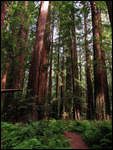
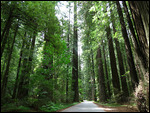
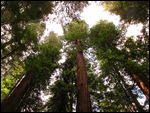
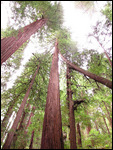
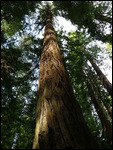
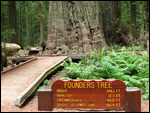
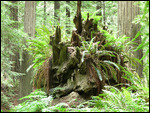
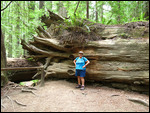
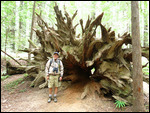
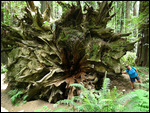

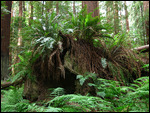
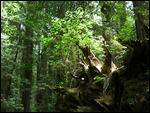
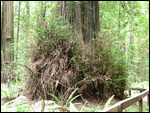
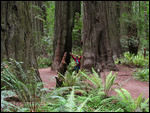
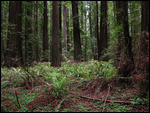
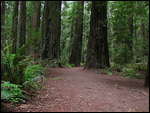
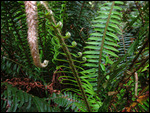
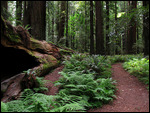
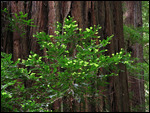
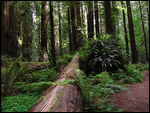
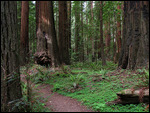
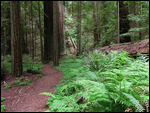
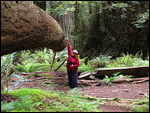
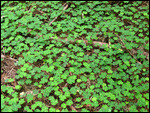
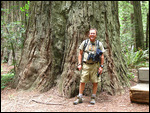
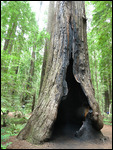
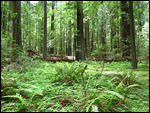
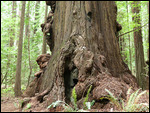

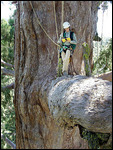
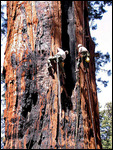

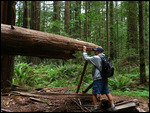
Jim Alpaugh
2015-06-10
Thanks for sharing all your travels. We truly live in a magnificent country with endless natural treasures.